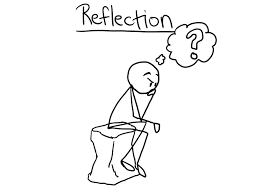So what exactly is reflection? Reflection has been described as a process that helps turn experience into knowledge (Gilbert & Trudel, 2001) and involves thought and exploration of a concept or event (Gray, 2007). It is a form of problem solving that is used to resolve coaching issues, and involves the careful consideration of a coaches practice, based on their knowledge and beliefs (Hatton & Smith, 1995).
Depending on the way you look at it, reflection can have many different meanings. Some of the meanings above mention, experience, knowledge, problem solving, practice and beliefs. All of these fit in well, if someone was to mention what reflection is and you were to describe to the person, these meanings will be a good description.

Different reflective practices
This video is evidence on everything I am about to write next on the types of different reflective practices.
So this video explains three types of reflective practices;
- Reflection FOR action
- Reflection IN action
- Reflection ON action
Reflection for action is something that a coach reflects from a past event, match or experience with what is about to come up. For example if a coach is about to prepare his/her team in an event/match the coach may say things that, “remember what we did well last time”, “why we did it well” and lastly “remember what we need to change from last time”.
Reflection in action is for coaches to “think of their feet” or in other words to think very quickly. So this will happen when coaches are doing practical with the athletes, furthermore role play will come under another way of reflecting as the coaches are showing them to the athletes faces on what they want them to do. Hence why this will most definitely benefit the players/athletes more. Also it will benefit the athletes more because the coaches are thinking, looking, listening and responding to what they are saying/doing. Reflection in action also requires the coaches to obverse, question and communicate with the athletes, this can be during role play but also just on a daily basis. Jeff Mitchell in an recent article writes about reflection in sport. Here they will bring aspects of their work to a conscious level, to reflect on the issue as it happens, and will try things out on the spot (Furlong & Maynard, 1995).
Reflection on action often occurs after the event, where the coach will reflect on skills or a situation, with a view to future improvement (Hatton & Smith, 1995). There wasn’t much information on this as it’s more simple than the other two.
Descriptive v Critical Reflection
Descriptive reflective – There is basically description of events, but shows some
evidence of deeper consideration in relatively descriptive language. There is no real
evidence of the notion of alternative viewpoints in use, (Watton, Collings & Moon, 2001).
Critical reflection – This form of reflection, in addition, shows evidence that the learner
is aware that actions and events may be ‘located within and explicable by multiple
perspectives, but are located in and influenced by multiple and socio– political contexts’ (Watton, Collings & Moon, 2001).
References
- Mitchell, J. (2013). Reflection as a Coach Development Tool. [online] Coach Growth. Available at: https://coachgrowth.wordpress.com/2013/07/27/reflection-as-a-coach-development-tool/ [Accessed 3 Nov. 2017].
- Watton, P. Collings, J. Moon, J. (2001). Reflective Writing. [online] Guidance notes for students. Available at: https://portal.uclan.ac.uk/webapps/blackboard/execute/content/file?cmd=view&content_id=_2501589_1&course_id=_78950_1
- https://www.youtube.com/watch?v=EDQP-5oh6IM






